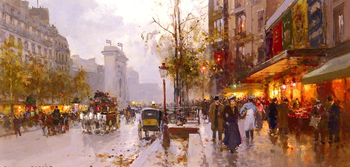Sizhecheng: Difference between revisions
mNo edit summary |
|||
| Line 3: | Line 3: | ||
|nation = [[Kingdom of Batavia]] | |nation = [[Kingdom of Batavia]] | ||
|name = Davignon | |name = Davignon | ||
|population = 1, | |population = 1,258,421 | ||
|language = Dutch, Diets | |language = Dutch, Diets | ||
|roads = N/A | |roads = N/A | ||
|districts = | |districts = Hertogswijck, Ouwe Molen, ... | ||
|mayor = | |mayor = | ||
|image_map = N/A | |image_map = N/A | ||
Revision as of 13:54, 20 February 2019
| Nation: | Kingdom of Batavia |
| Population: | 1,258,421 |
| Predominant language: | Dutch, Diets |
|
| |
| Main roads: | N/A |
| Major districts: | Hertogswijck, Ouwe Molen, ... |
|
| |
| Current mayor: | |
| File:N/A | |
| Map versions: | N/A |

Davignon is a city in the Kingdom of Batavia and capital of the former province of Dietsland. The city is the second largest of the country and was the centre of important political changes, including the (in)famous Davignonrepublic. While it was confronted with rising pauperism during most of the early 17th century, and periodically shelled by Shirerithian forces during the period of Imperial occupation, a huge fire in 1669 AN devoured most of the old city centre with its narrow streets and neglected houses.
Renewal program
An urban renewal program, pushed and supported by Prince Joseph Bartholomeus des Vinandy-Windsor and led by Adolf Perrier, was started the same year: the burned down houses and slums were erased from the earth, while survivors were moved out to temporary housing near the edge of the city. Protests immediately broke out among a part of the poor workers when news about the renewal program spread, but it was soon suppressed by the police forces. Further promises of better living conditions in the new houses and the prospect of a job (as the works would produce a demand in skilled and unskilled labour) calmed most nerves. The first construction works could begin. The Prince, however, envisioned more than new and clean houses: inspired by his experiences at Paleys Raiselle, he wanted to rebuild the city in Batavian Renaissance style: wide boulevards, parks to relax, palaces and monuments to impress and act as meeting places for industrialists and higher classes.
Curiosities
The Gewestraad (legislative power of the district Dietsland) is located in the city. Other curiosities are the Stadhuis (City Hall) and the Hertogelijk Paleis (Ducal Palace).